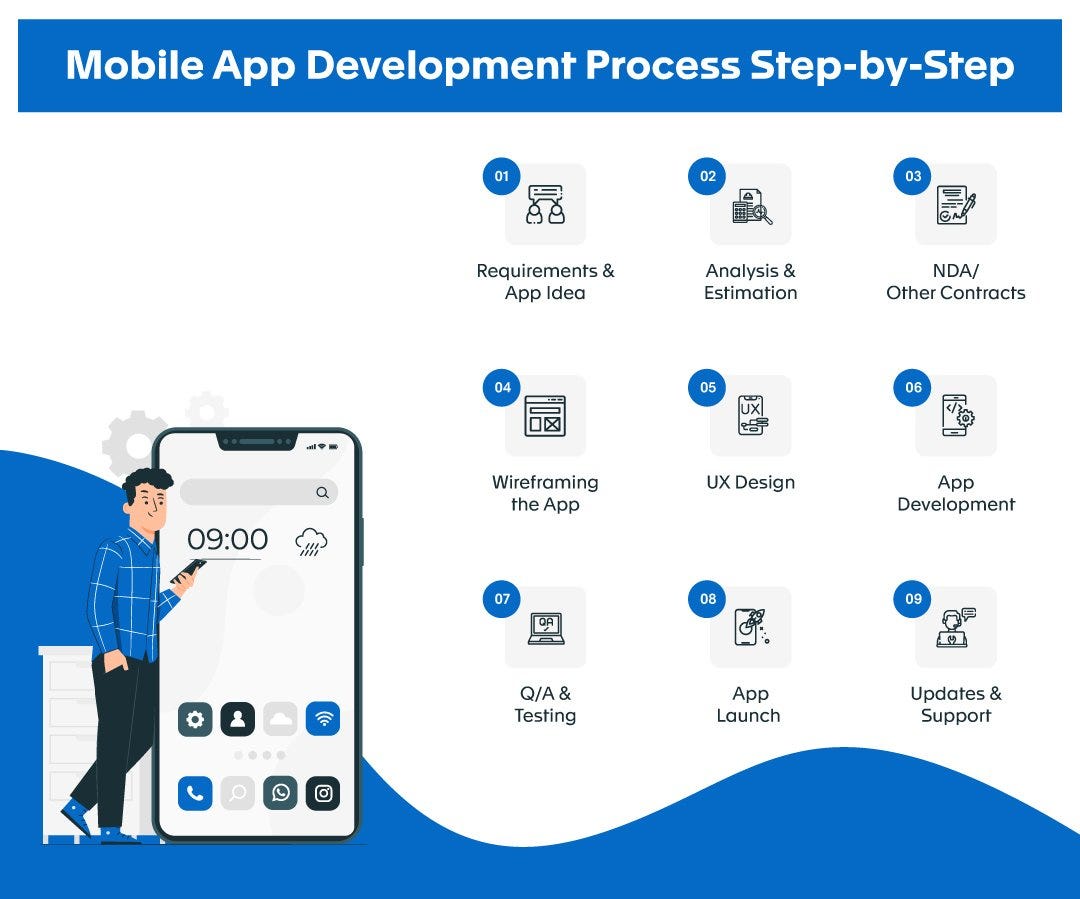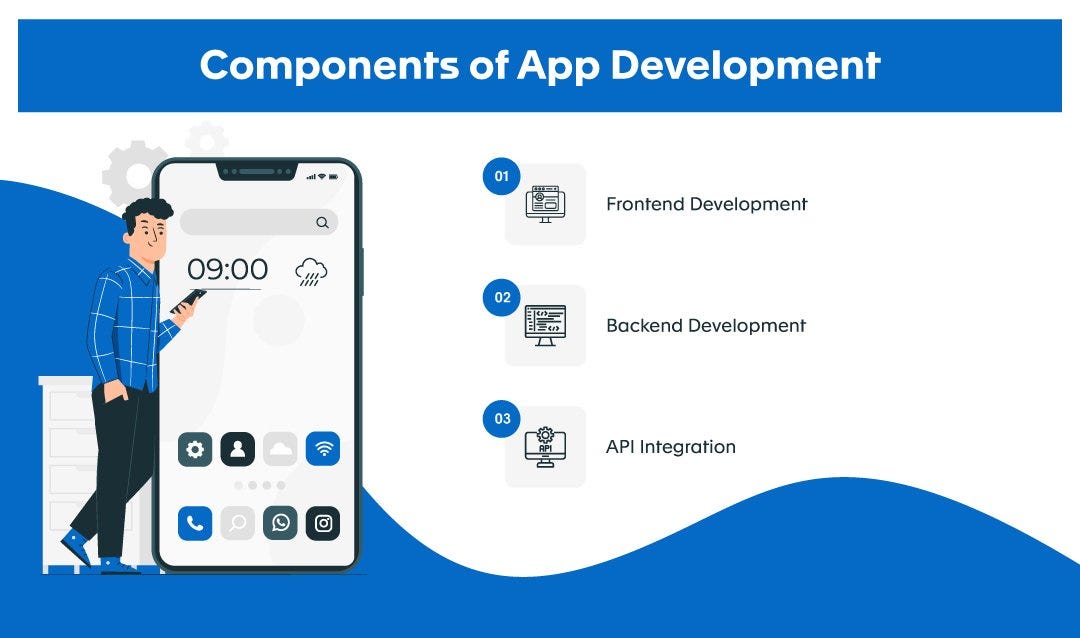Mobile App Development Process
With businesses adopting a mobile-first approach and the growing number of mobile apps, successful mobile app development seems like a quest. But it’s the process that determines the end result. We come across many clients who have questions regarding the process we follow for developing mobile apps. Therefore, we decided to answer some of those common queries through this blog.
Mobile App Development For Your Business
We are living in the digital era where businesses have to deal with a tech-savvy audience that likes to have everything moving at their fingertips. Today, mobile applications, along with other resources, can do a lot more for business growth than you think. Now, take a look at some of these facts.

Key Steps in Mobile App Development Process
You would probably find various mobile app development process steps explained by different companies. However, based on the best practices, we have tried to narrow down the entire process into

1. Communicating the App Idea and Other Development Requirements
The first and most important step of the app development process is communicating your requirements and app ideas to the developers. As a mobile app development company, we understand the impact of miscommunication better than anyone. Above everything else, we will only be able to fulfill your requirements if we know what you exactly want.
There are some important questions you should be able to answer during this phase.
What type of application do you want?
The maximum budget for your app development project?
What will be your project’s timeline?
Do you have any examples of similar apps according to your app idea?

2. Business Analysis and Cost Estimation
Once you communicate requirements from your end, the experts work on analyzing your business environment, study similar apps and prepare a plan. It’s very important to set standards and guidelines in the beginning to ensure regularity and high quality. Based on the level of work and resources required, we assign specific team members for your project.
3. Signing the NDA or Other Contracts
While this may vary for many development companies, signing an NDA for your project has notable perks. It is one of the best ways to avoid any misconceptions and misunderstandings between both parties. The NDA clearly states the project deliverables, legal clauses, and any references for the app idea.
4. Wireframing the App
Once you are clear about the app idea, it’s time to see and plan how it would look like an app. Wireframing is a pillar of the mobile app development process. It emphasizes the flow of app development and ensures that nothing is left out. It helps to bridge the gap between the app idea and the final product.
5. UI/UX Design
Good design practice is crucial for a successful mobile app. Based on your preferences and the references you suggest, your partnered mobile app development company prepares several screen samples. Later, when a sample is finalized, all screens for the app are designed.

6. Mobile App Development from Scratch
Once the designing part is done, it’s time to bring everything into action. This is where the actual programming for app development begins. According to the languages and frameworks decided for both frontend and backend, respective tasks are assigned to suitable developers and QA experts. There are various components of mobile app development. In general, these include frontend development, backend development, and API integration.

If you’ve been juggling between getting a customized mobile app and a generic app,
Read Our Blog: 7 Advantages of Custom Mobile App Development For Your Business
7. Q/A and Testing
When you decide to develop a mobile app for your business, know that it requires a lot of testing at different stages. Testing and Quality Analysis are key to building high-quality apps. Therefore, make sure that the services you seek are following best practices for the same. Irrespective of the type of mobile application you want, there are several test cases that the QA team performs to deliver a flawless app.
8. App Launch
Launching an app on respective app stores can be a bit daunting, but your mobile application development company will help you with it. Google Play Store and Apple’s App Store both have some rigid policies and standards that need to be met in order to get permission for release on these platforms.
9. Post-Development Updates and Support
While most people think that app development ends with its launch, the truth is different. Gradually, you would realize that continuous support and updates post-development are crucial to ensure the good conditions of the app.
Make sure you talk to your development partners regarding how they manage post-launch activities. It’s not something you should compromise.

Strengthen Your Business With a Robust Mobile App
Whether you have a startup or a well-established enterprise, it’s crucial to have a robust mobile application to support it within the online markets. We hope that the information we shared above gives you clarity about the basic mobile app development process. Although this may vary for various development companies, we have tried to mention the most important steps according to the industry’s best practices.
Source: Mobile App Development Process











Thanks for sharing this informative article!
I found it to be very comprehensive and well-written. Building a successful mobile app requires dedication, expertise, and a commitment to continuous improvement. We also published a comprehensive blog on the mobile app development process.